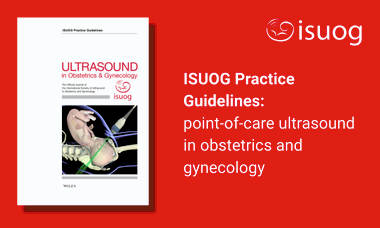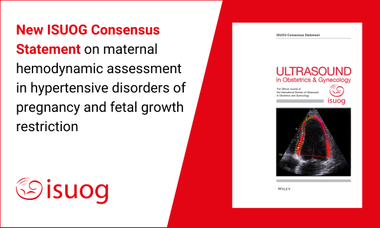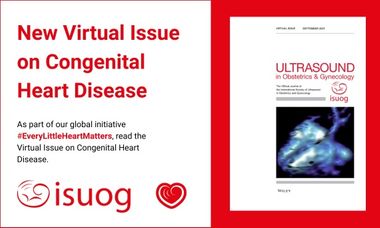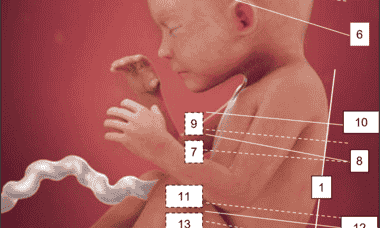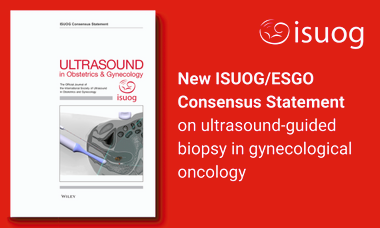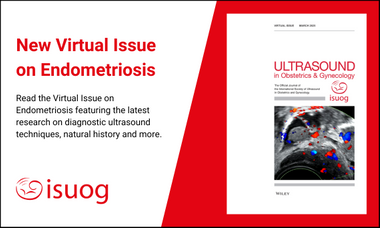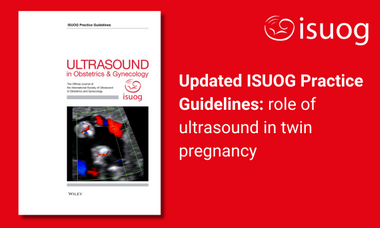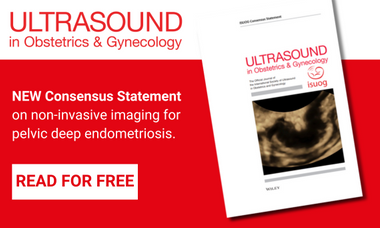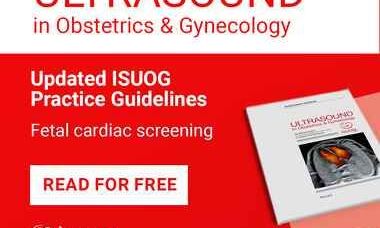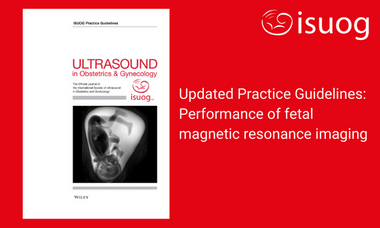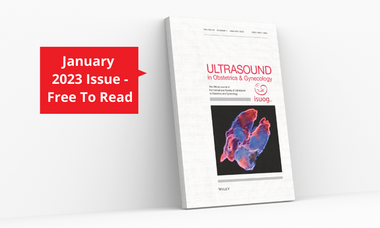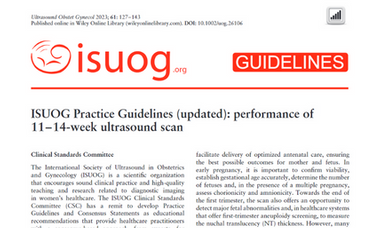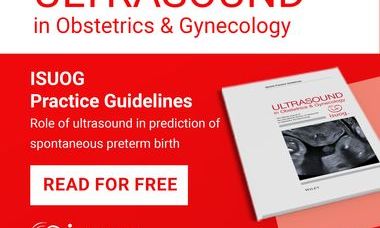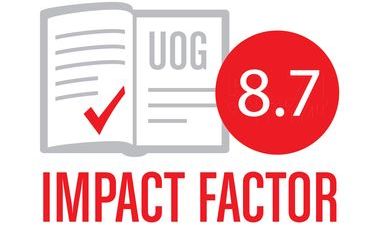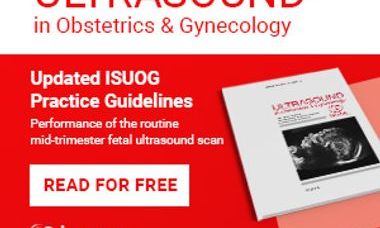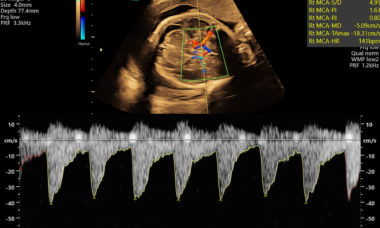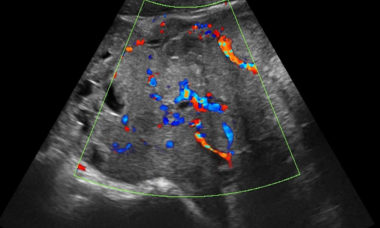New ISUOG Practice Guidelines: point-of-care ultrasound in obstetrics and gynecology
Read the new ISUOG Practice Guidelines on the use of point-of-care ultrasound (PoCUS) in obstetrics and gynecology in various clinical scenarios that may be encountered by different healthcare professionals.
New ISUOG Consensus Statement on maternal hemodynamic assessment
Read the new ISUOG Consensus Statement providing an update on the role of maternal hemodynamic assessment in hypertensive disorders of pregnancy and fetal growth restriction.
New Virtual Issue on Congenital Heart Disease
Read the Virtual Issue on Congenital Heart Disease, curated in support of the ISUOG Every Little Heart Matters campaign, featuring the latest research and expert guidance on prenatal screening, management, novel diagnostic methods and more.
New ‘How To’ article on applying the 20 + 2-planes method for identification of fetal abnormalities
Read the new ‘How To’ article, offering practical guidance on how to apply 20 + 2-planes method for identification of 65 fetal abnormalities during routine second-trimester ultrasound, as featured in ISUOG’s Basic Training program.
New ISUOG/ESGO Consensus Statement on ultrasound-guided biopsy in gynecological oncology
A new ISUOG/ESGO Consensus Statement provides accessible guidance to clinicians to help achieve the best standards of practice in ultrasound-guided biopsy.
New Virtual Issue on Endometriosis
Read the Virtual Issue on Endometriosis, featuring the latest research on diagnostic ultrasound techniques, natural history and much more.
Newly updated ISUOG Practice Guidelines: role of ultrasound in twin pregnancy
Read the newly updated ISUOG Practice Guidelines on the role of ultrasound in twin pregnancy.
New International Consensus Statement: Non-Invasive Imaging Techniques for Diagnosis and Classification of Pelvic Deep Endometriosis
The culmination of a major international collaboration spanning three years has resulted in the publication of an International Consensus Statement on the use of non-invasive imaging techniques for the diagnosis and classification of pelvic deep endometriosis.
New ISUOG Practice Guidelines: performance of third-trimester obstetric ultrasound scan
Read the new ISUOG Practice Guidelines on the performance of third-trimester obstetric ultrasound scan.
Newly updated ISUOG Practice Guidelines: performance of fetal cardiac screening
Read the newly updated ISUOG Practice Guidelines on the performance of fetal cardiac screening.
Newly updated ISUOG Practice Guidelines: performance of fetal magnetic resonance imaging
Read the newly updated ISUOG Practice Guidelines on the performance of fetal MRI.
Our January UOG issue is free to read
Sign up for a Journal membership this January and get 20% off. Journal Membership includes an online subscription to the UOG Journal in addition to the benefits of Standard Membership.
Updated ISUOG Practice Guidelines: performance of 11–14-week ultrasound scan
Read the newly updated ISUOG Practice Guidelines on the performance of 11–14-week ultrasound scan.
Ultrasound in Obstetrics & Gynecology
Ultrasound in Obstetrics & Gynecology is ISUOG's leading journal in the field of obstetric & gynecological imaging, with over 6.6 million article downloads in 2021.
New ISUOG Practice Guidelines: role of ultrasound in the prediction of spontaneous preterm birth
Read the new ISUOG Practice Guidelines on the role of ultrasound in the prediction of spontaneous preterm birth.
Ultrasound in Obstetrics & Gynecology has a new Impact Factor of 8.678!
UOG is now the fourth leading journal in the Obstetrics and Gynecology category, with an impressive Impact Factor of 8.678. UOG Editor-in-Chief Prof. Anthony Odibo stated: “the continued increase in the Impact Factor of UOG is the result of the dedicated work of our editors, editorial board and reviewers, our authors who continue to entrust the journal with their high-quality, clinically impactful research, and the editorial office staff led by Sarah Hatcher. The UOG team would like to thank wholeheartedly everyone who has contributed to our new Impact Factor.”.
Newly updated ISUOG Practice Guidelines: performance of the routine mid-trimester fetal ultrasound scan
Read the newly updated ISUOG Practice Guidelines on how to perform the routine mid-trimester fetal ultrasound scan.
Newly updated ISUOG Practice Guidelines: use of Doppler velocimetry in obstetrics
Read the newly updated ISUOG Practice Guidelines on how to perform Doppler ultrasonography of the fetoplacental circulation.
ESGO/ISUOG/IOTA/ESGE Consensus Statement on preoperative diagnosis of ovarian tumors
ISUOG along with ESGO, IOTA and ESGE have issued a Consensus Statement on the preoperative diagnosis of ovarian tumors. This joint publication presents clinically relevant and evidence-based statements on the diagnosis of these tumors and assessment of disease spread, including imaging techniques, biomarkers and predictive models.
Newly updated ISUOG Practice Guidelines: sonographic examination of the fetal central nervous system. Part 2: performance of targeted neurosonography
Read the newly updated ISUOG Guidelines describing the protocol for the diagnostic ultrasound examination that should be performed in any case in which there is an increased risk of CNS malformation.

